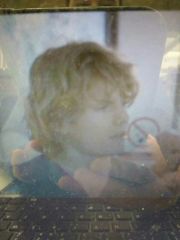![]()
![]()
![]()
Use LEFT and RIGHT arrow keys to navigate between flashcards;
Use UP and DOWN arrow keys to flip the card;
H to show hint;
A reads text to speech;
22 Cards in this Set
- Front
- Back
- 3rd side (hint)
|
What type of cell present antigens to the adaptive immune system? |
Phagocytes |
|
|
|
What is the complement? |
A protective part of the immune system that helps lymphocytes, antibodies and phagocytes clear pathogens |
|
|
|
6 things the complement system does |
1) initiates acute inflammation by stimulating mast cell degranulation 2) attracts neutrophils to infection site by chemotaxis 3) attacks bacterial cell membranes 4) opsonizes bacteria for phagocytes 5) promotes clumping of antigen-bearing agents 6) helps clear immune complexes and cell fragments |
|
|
|
What's the complement in humans composed of? |
9 major serum proteins |
|
|
|
4 points on cascade pathways e.g. ensures specificity |
Amplifies weak signals Highly regulated Prevents inappropriate activation Generates useful cleavages products |
|
|
|
What is C1 activated by and what's the effect? |
C1 is a large serum glycoprotein complex composed of three subunits
Is is activated by immune complexes in serum or on pathogen surface.
It binds non self or bad self cells to bring about agglutination (expression of antigens) |
Classical complement activation pathway |
|
|
Example of a classical activation pathway |
C1 binds to immune complex. Activates serum protein C4. C4 binds to cell or pathogen surface and acts as a binding site for C2 This forms a complex which then binds and cleaves C3 into active fragments. (Amplification loop of the c3 cleavage bit for more c3 molecules) C3b has immunological effects. |
Starts with C1 |
|
|
What does C3b do? Is it innate or adaptive? |
It can bind directly or indirectly to microbe and opsonizes it for uptake by phagocyte. Binds to complement receptors on phagocytes.
Can be innate or adaptive. |
|
|
|
How is the lection pathway different to the classical pathway? |
Initiated by a mannose binding protein (lectin) rather than immune complexes |
|
|
|
What do C3a and C5a do in classical, alternate and lectin pathways? (Same in all three) |
C3a and C5a mediate inflammation through activation of leukocytes. |
|
|
|
What are cytokines? |
Small soluble proteins, peptides or glycoproteins that act as signals |
|
|
|
What do cytokines do? |
Released by cells in response to a stimulus e.g. immune complexes. Bind to specific cell surface receptors. Critical for cellular immune processes. Some influence production and growth of leukocytes. |
|
|
|
4 cellular immune processes that cytokines are critical for |
- chemotaxis - cell activation - enhanced cytotoxicity - general immune regulation. |
|
|
|
Cytokines are pleiotropic, redundant and multifunctional. What do these three things mean? |
Pleiotropic= can act on multiple cell types Redundant= different cytokines have different functions Multinational= able to regulate multiple processes |
|
|
|
5 cytokines groups (inc. other) |
Monokines Chemokines Interferon's Lymphokines Other. |
|
|
|
What are monokines released by and why? |
Monokines are released by monocytes and macrophages to aid innate responses. |
|
|
|
When are chemokines produced and why? |
Produced by various cell types following infection or physical damage. Activate and direct monocytes and macrophages to damage (e.g. are chemotaxins) |
|
|
|
When are interferons produced and why? |
Produced by many cells in response to viral infection. Inhibit viral replication, increase NK cell activity. |
|
|
|
What are lymphokines produced by and why? |
Released primarily by lymphocytes. Act as lymphocyte growth factors and direct lymphocyte development. |
|
|
|
What are the cytokines produced by T helper cells important for? |
Those produced as a result of binding to MHC Class II are important for: stimulating killing of intracellular microbes and generation of Tc cells. Others are important for B cell differentiation and stimulating anti parasite defence by recruitment of eosinophils. |
|
|
|
Example of an 'other' cytokines, what its produced by and whh |
Tumour necrosis factor. Produced by macrophages, dendritic cells and mast cells. Involved in systematic inflammation. |
|
|
|
Cleavage of C3 leads to the assembly of what? Which does what? |
Cleavage of C3 leads to assembly of MAC which punches holes in foreign or dangerous cells to kill them. |

|

